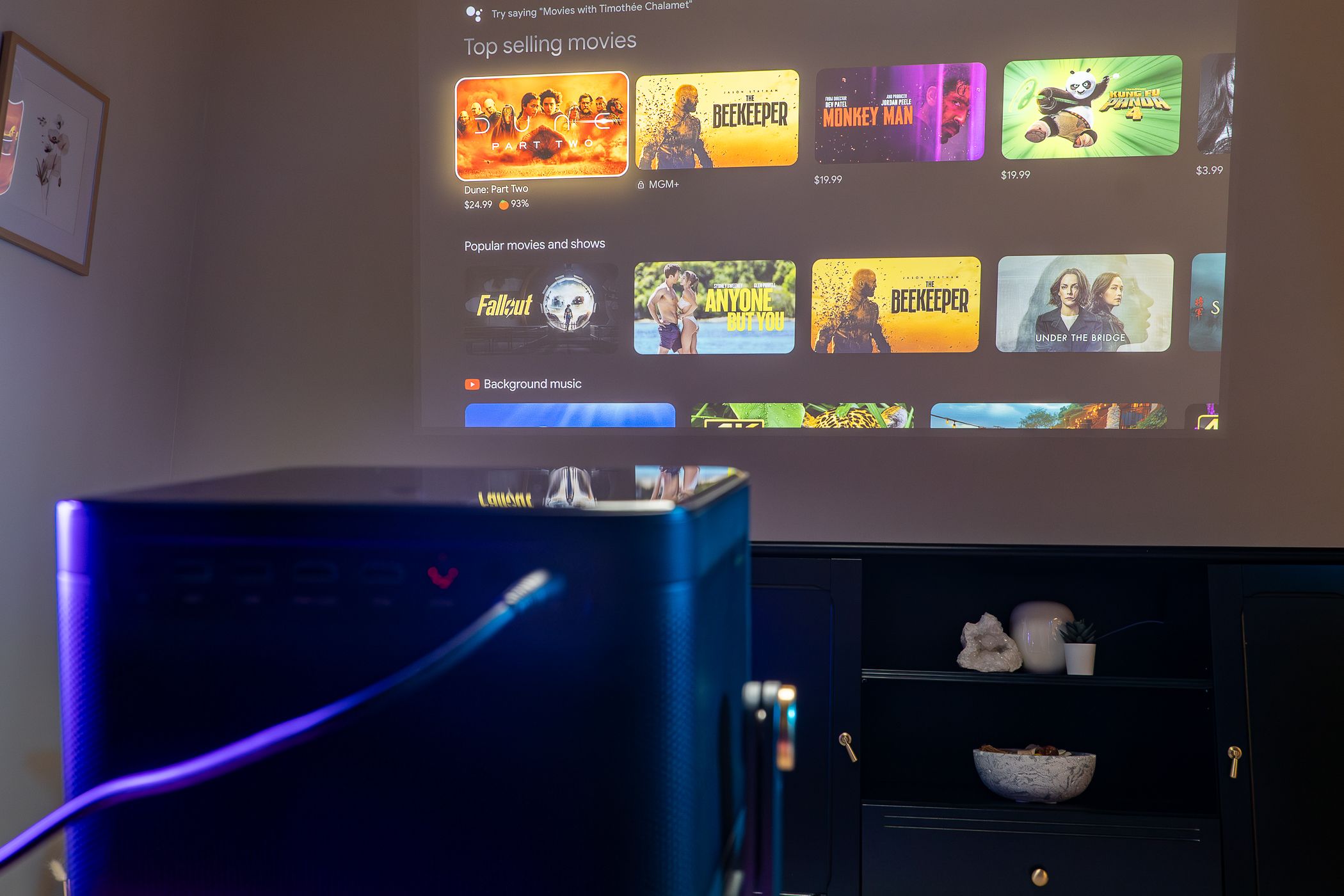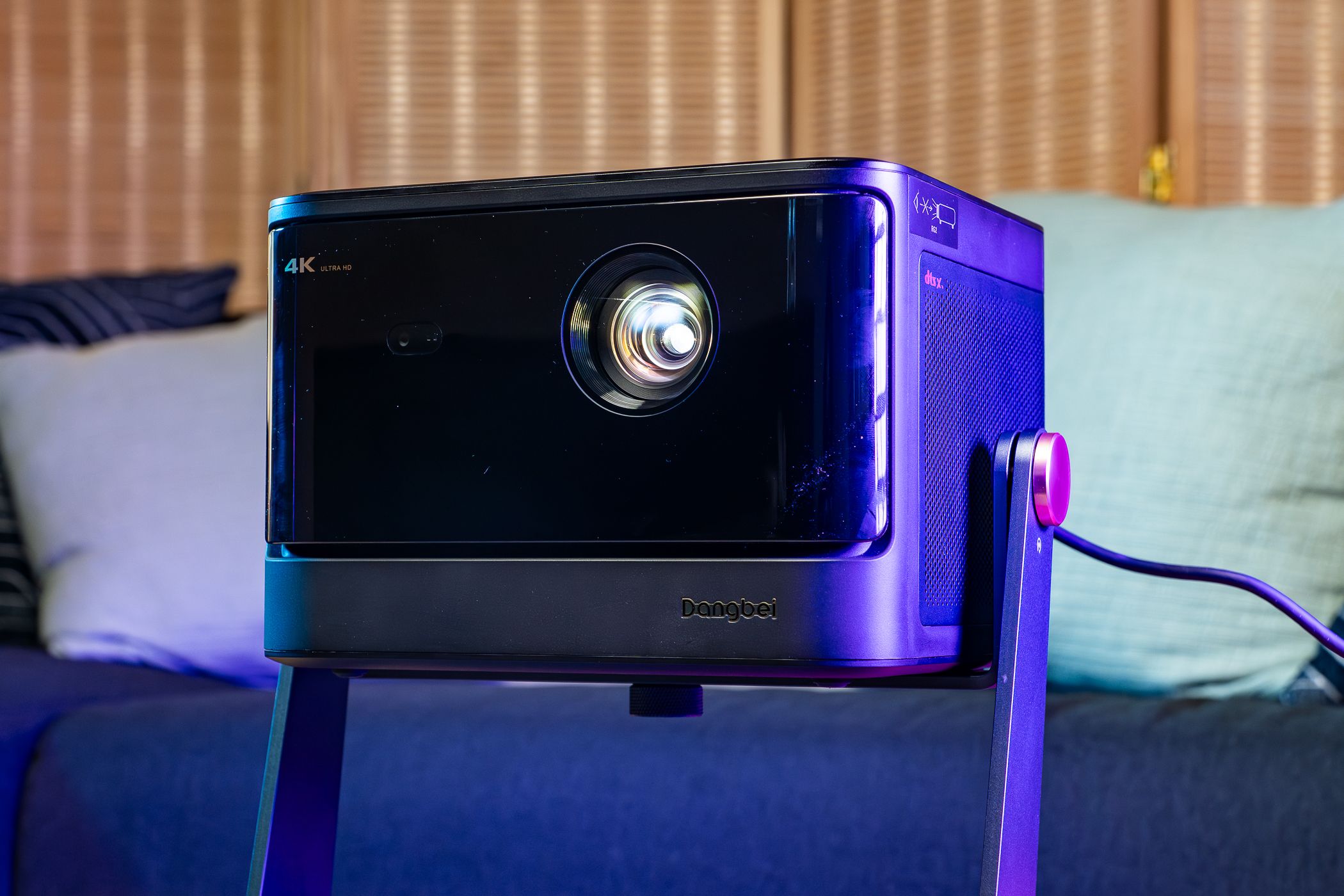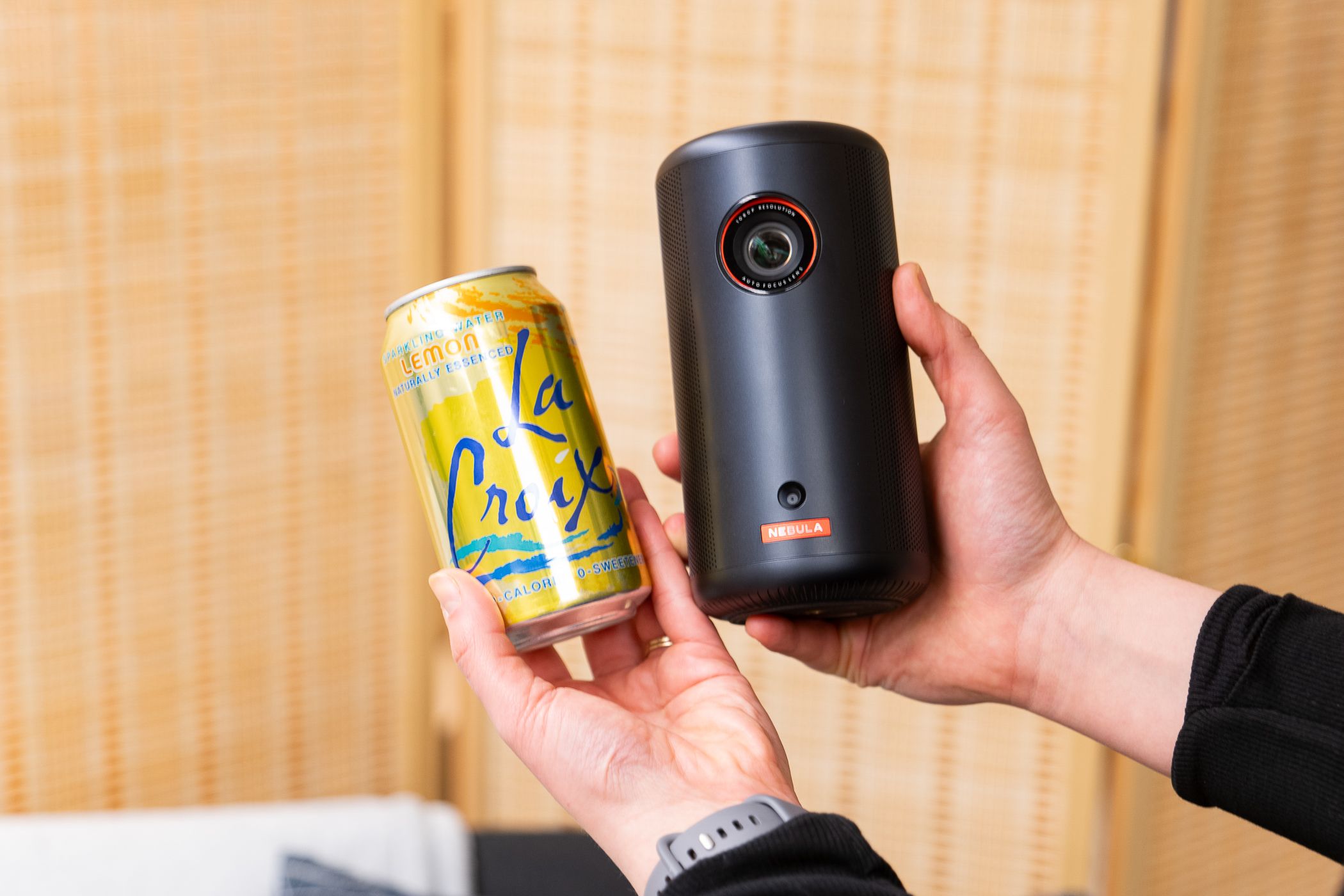
Understanding the Weight of Laser Projectors: An In-Depth Guide

Understanding the Weight of Laser Projectors: An In-Depth Guide
Key Takeaways
- Most laser projectors are designed for the high-end market and use a large laser light source.
- As a projector’s max brightness increases, it generates more heat, necessitating larger and heavier cooling systems.
- Laser projectors that achieve a lightweight design do so by using a relatively dim light source.
Every time I review a laser projector, I inevitably struggle to find a good place to put it in my living room. Not only are these projectors bulky, but they’re heavy, often clocking in at over 12 pounds. Ideally, I would just mount a heavy laser projector to my ceiling, but I’m worried that it would fall on someone’s head.
Am I overly paranoid? Duh, but my paranoia led me to ask why laser projectors are so heavy, and the answer is pretty interesting.
How Much Does the Average Laser Projector Weigh?

Jerome Thomas / How-To Geek
Most laser projectors target the premium consumer market and boast a predictable set of features, such as a 4K resolution, a gaming mode, and a picture that’s bright enough for daytime use. However, there are often differences in throw ratio, size, and weight.
So, let’s get a rough estimate of how much the average laser projector weighs. We’re going to focus on consumer-grade 4K laser projectors that are intended for home use, as weaker portable options are relatively uncommon (and will be discussed later in this article). In this case, “consumer-grade” refers to projectors that cost less than $3,000—comically expensive units like the $12,000 Sony VLPWX6000ES aren’t of our concern.
- XGIMI Horizon Ultra (Short Throw): 11.5 lbs (5.2 kg)
- Hisense C1 Mini (Short Throw): 10.1 lbs (4.6 kg)
- Optoma UHZ35ST (Short Throw): 6.61 lbs (3 kg)
- Optoma UHZ55 (Long Throw): 10.5 lbs (4.8 kg)
- Epson EpiqVision LS300 (UST): 15.84 lbs (7.2 kg)
- Samsung The Premiere (UST): 20.1 lbs (9.1 kg)
Using this admittedly small sample size, we can determine that the average 4K laser projector weighs about 12.5 pounds. Really, that’s not a terrible weight for a consumer-grade projector, and there are plenty of bulb or LED projectors that weigh more than 12.5 pounds!
But if you want a reasonably bright 4K LED projector that weighs 6 or 7 pounds , you won’t have any trouble finding one. Laser projectors are unusual because there are very few portable or lightweight options.
The only major exception in this list is the Optoma UHZ35ST laser projector. It weighs just 6.61 pounds, which is very impressive. However, the Optoma UHZ35ST is a bit of an odd duck—it costs $2,399 but lacks several features that usually come standard at this price, such as a zoom lens, an integrated stereo speaker system, lens shift capabilities, autofocus, and auto keystone. It’s also somewhat dim, according to reviewers (Optoma doesn’t provide an industry-standard lumens measurement for this model).
And, interestingly, ultra-short throw (UST) laser projectors seem to weigh more than short-throw or long-throw models. There’s a good reason for this, and we’ll get to it in a second.
More Light Leads to More Weight

Jerome Thomas / How-To Geek
Old-fashioned projectors use a lamp to produce light. But, as you’ve probably guessed, laser projectors rely on a solid-state laser light source. The main benefit of this laser technology is that it can produce a very bright picture while consuming less energy than an equally bright lamp projector.
However, a laser light source still uses a fair bit of energy, and much of that energy is wasted through quantum defect . So, you end up with a lot of heat (and an opportunity for condensation) that could damage the projector’s sensitive optical components. There’s only one way to dissipate this heat—a bulky cooling system.
The main contributor to a laser projector’s weight and size is usually its heat sink. If you pop open a laser projector, you’ll be shocked by how much space is dedicated to big metal fins and radiators. Take a second to check out FixitFrank’s VAVA VA-LT002 teardown . The cooling system takes up half of the projector!
Generally speaking, the amount of cooling required by a projector’s light source (laser or otherwise) will increase along with its peak brightness (and a bright laser light source will usually be heavier than a dim one). Because consumer-grade laser projectors are usually tailored toward the premium market, they tend to be very bright and need a ton of thermal regulation. However, this isn’t always the case. Some portable laser projectors, like the Anker Nebula Capsule 3 , are comparatively dim and don’t require much cooling.
Of course, there are plenty of other components that will contribute to a laser projector’s weight. Some lighting systems are larger and heavier than others, and small components that are often featured in laser projectors (like autofocus motors and manual zoom hardware) can add a few pounds to the mix.
A power supply can also contribute to the overall weight, which is why ultra-short-throw (UST) models tend to outweigh short-throw or long-throw options. They sit directly against the wall and can take up a lot of space without being a huge inconvenience, so they often use an internal power supply instead of an external one.
Some Laser Projectors Aren’t Heavy (But They’re Dim)

Jerome Thomas / How-To Geek
To illustrate how a laser projector’s brightness contributes to weight, just look at portable laser projectors like the Anker Nebula Capsule 3 and LG CineBeam PH30N . These projectors weigh 1.8 pounds and 1.1 pounds, respectively, but they output a low-resolution image at just 200250 ANSI lumens.
For reference, the Samsung Premiere projector listed at the top of this article projects at 2,200 ANSI lumens. It’s literally the difference between night and day. You can use the Samsung Premiere during the daytime and still get a usable picture, but the Anker Nebula Capsule 3 can hardly produce a passable image outside of a seriously dark environment.
I should clarify that portable laser projectors aren’t “bad,” as they certainly have their uses. The point is that brightness and weight go hand-in-hand. You can’t have an ultra-portable laser projector with the brightness of a Samsung Premiere or XGIMI Horizon Ultra, at least not yet.
Also read:
- [New] 2024 Approved The Innovator’s Playbook Recording Shows in the Cloud
- [New] 2024 Approved Visionaries Inventing New Marvel Worlds
- [New] In 2024, Basic to Breakthrough Content Crafting the Top 10 Simplest YouTube Projects
- [New] Ultimate Guide to Zooid Template Design for 2024
- 2024 Approved Chart-Topping Storytellers to Follow on YouTube This Year
- How to Fix It Nubia Red Magic 8S Pro Wont Turn On | Dr.fone
- In 2024, Understanding Video Formats Which Is More Effective, AV1 or VP9?
- Mastery Manual Downloading HD Videos on Today's Digital Landscapes for 2024
- Ultimate Guide to Choosing the Ideal Bluetooth Speaker in 2E24
- Unleash a Thunderous Sound: Discover Sony's Revolutionary ULT Lineup for Superior Bass Quality in Speakers and Headsets
- Unlock Exclusive Discounts on Gadgets: Anker's Mini Power Bank, Latest Google Pixel Timepiece, and Secure Your Home with Blink Cameras!
- Unlocking Full Potential: Effortlessly Operate Windows with Your New Steam Deck OLED Device
- Unlocking Seamless Connectivity: A Step-by-Step for Combining Various Mesh Network Systems
- Unraveling the Origin: What's Behind the Name 'Bluetooth'?
- Title: Understanding the Weight of Laser Projectors: An In-Depth Guide
- Author: Kevin
- Created at : 2024-09-13 16:21:13
- Updated at : 2024-09-16 16:03:35
- Link: https://hardware-reviews.techidaily.com/understanding-the-weight-of-laser-projectors-an-in-depth-guide/
- License: This work is licensed under CC BY-NC-SA 4.0.
